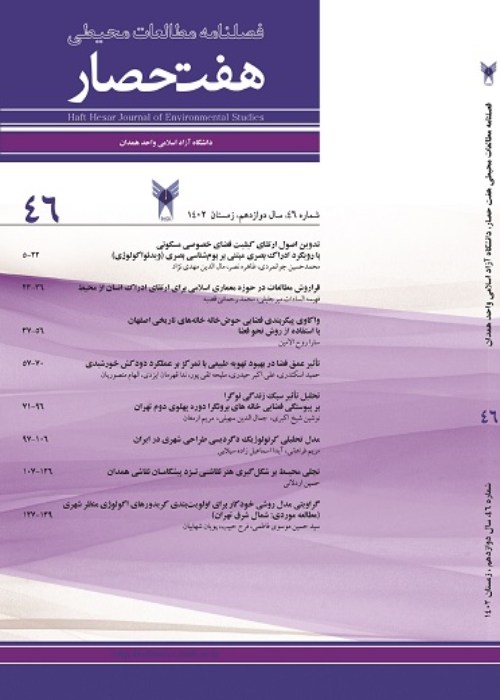The recognition of the necessity of for community-based disaster risk management to reduce the risk of vulnerability to earthquake disaster (case study: YousefAbad neighborhood of Tehran)
Disaster management and current attitudes in this area only focus on this areachr('39')s physical vulnerabilities, raising urban residentschr('39') exposure to these challenges in front of the earthquake. On the other hand, Incidental actions include reducing the vulnerability and the physical strengthening and promotion of poor organization during the disaster; they ignored the capabilities and capacities of residents to reduce vulnerabilities and consequently reduce casualties and damage. However, recent approaches that have been entered in disaster management introduce the importance of pathology in the face of disasters compared to the physical vulnerabilities. These attitudes have relied on the fact that the vulnerabilities have an almost perfect inverse relationship with the residentschr('39') capabilities are facing a disaster. Thus, community-based disaster risk management recognizes the necessity of vulnerability indicators, potential residents, and community resources.The purpose of this study is to assess the relationship between the ability of residents and social vulnerabilities. Because of the type of parameters and variables item not only measured through questionnaires but also includes a wide range of physical and social indicators and statistics derived from the questionnaire, statistical analysis software like SPSS and geographical information System like ArcGIS has been used in this research. The article measures the capabilities and vulnerabilities of their residentchr('39')s indictors in Youssef Abad neighborhood. Results indicate that not only the physical issues in the disaster to minimize vulnerabilities. Therefore, the emphasis is on new disaster management approaches with longer considered social and capacity building and residents. Finally, the effect of each of the indicators, the overall strategies to reduce vulnerability to earthquakes, is presented.
- حق عضویت دریافتی صرف حمایت از نشریات عضو و نگهداری، تکمیل و توسعه مگیران میشود.
- پرداخت حق اشتراک و دانلود مقالات اجازه بازنشر آن در سایر رسانههای چاپی و دیجیتال را به کاربر نمیدهد.


